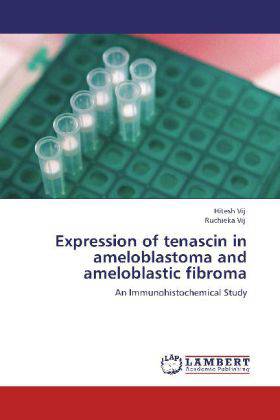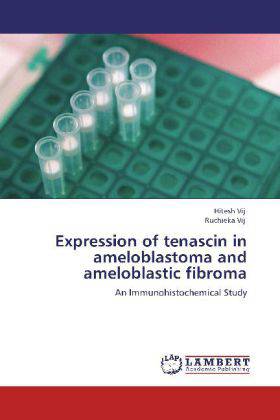
- Afhalen na 1 uur in een winkel met voorraad
- Gratis thuislevering in België vanaf € 30
- Ruim aanbod met 7 miljoen producten
- Afhalen na 1 uur in een winkel met voorraad
- Gratis thuislevering in België vanaf € 30
- Ruim aanbod met 7 miljoen producten
Zoeken
Expression of Tenascin in Ameloblastoma and Ameloblastic Fibroma
An Immunohistochemical Study
Hitesh Vij, Ruchieka Vij
Paperback | Engels
€ 67,45
+ 134 punten
Omschrijving
Odontogenic lesions range from developmental anomalies to benign and malignant neoplasms. Ameloblastoma, known for its locally invasive behaviour and high risk of recurrence, is a frequently encountered benign ectodermal odontogenic tumour, while ameloblastic fibroma is a mixed odontogenic tumour with relatively lesser frequency. These tumors demonstrate varying inductive interactions between odontogenic epithelium and odontogenic ectomesenchyme of which extracellular matrix (ECM) plays an important role. Tenascin, a large glycoprotein component of ECM is involved in cell-to-cell and cell-ECM interactions. A diverse expression of tenascin has been reported in various lesions, where it may affect cellular proliferation, differentiation and migration. Till to date, there are only a few reports on the role played by tenascin in odontogenic tumors. The purpose of this study was to analyze the expression and distribution of tenascin in ameloblastoma and ameloblastic fibroma with varied stromal back ground thus to understand their phenotypical behavior.
Specificaties
Betrokkenen
- Auteur(s):
- Uitgeverij:
Inhoud
- Aantal bladzijden:
- 184
- Taal:
- Engels
Eigenschappen
- Productcode (EAN):
- 9783848489879
- Verschijningsdatum:
- 19/06/2012
- Uitvoering:
- Paperback
- Formaat:
- Trade paperback (VS)
- Afmetingen:
- 152 mm x 229 mm
- Gewicht:
- 276 g

Alleen bij Standaard Boekhandel
+ 134 punten op je klantenkaart van Standaard Boekhandel
Beoordelingen
We publiceren alleen reviews die voldoen aan de voorwaarden voor reviews. Bekijk onze voorwaarden voor reviews.











